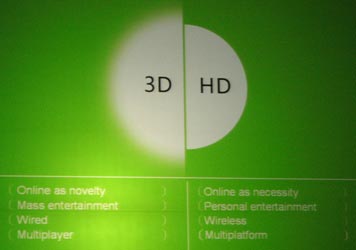GDC: Tuesday Mobile Summary

On Tuesday, I spent most of my time running about the GDC Mobile Game circusóI mean circuit *wink*… I went to most of the morning discussions which were about the future of the industry as well as some business ones in the afternoon and closing discussions toward the end. Needless to say, I’m just a tad fatigued. But who really cares anyway, I’m here for you whether you like it or not. Have no fear (it is a mind killer, you know)… All this info is good for you, like broccoli. Here’s some bait to take the leap: Did you know… Revenues for the mobile game industry are forecasted to grow from $160 million in 2003 to $1.7 billion in 2008??? [insert pause] Oh, what’s that you say? You want me to do a count down? Well, alright, whatever suits your fancy and I only wish you the best… 3, 2, 1óMike Yuen (Qualcomm) did an interesting presentation where he applied the principles of Malcolm Gladwell’s Tipping Point to the mobile game industry. Basically, his prediction is that by using cross platform game design, the mobile game industry will be able to maintain momentum and reach a tipping point. He gave examples of previous tipping points in gaming history, such as Pac-man (1980), Super Mario Bros. (1985), Tetris (1989), and Doom (1993). For each historical tipping point, he pointed out the innovative design elements that enabled those games to take the lead. Some of which are that the games are character driven. There may be a learning curve element, which is when it is easy to learn, yet difficult to master. Another is the depth of content, in which sound effects will aide in immersion. A couple others are shareware, in which the popularity of the game is driven by word of mouth, and user participation in how they want to play by developing their own content, such as mods.
Some of the major themes across multiple discussions during the Mobile GDC gatherings were:
The mobile games industry is rapidly growing.
It’s mostly popular in Asia.
There was an emphasis on collaboration between providers of content and carriers for marketing and technological achievements.
And the idea of using the inherent properties of mobile communication as a part of game design in order to make it distinctive from more traditional forms of gaming, like PC or console games.












